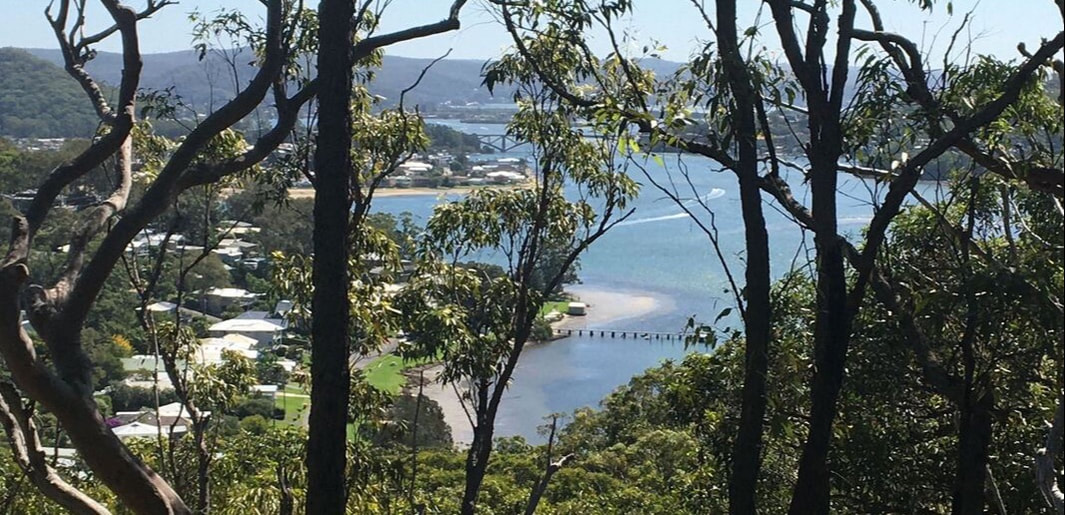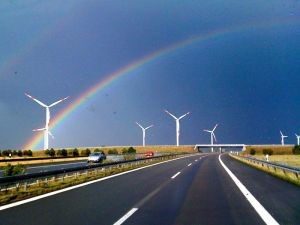|
A new interpretive sign has been placed next to the path from the first carpark to the beach. The sign marks the completion of the Council grant obtained by the Trust for the restoration of the adjacent gully.
0 Comments
The Trust’s 2020 year commenced with the huge success of our Climate Change expert presentation at the Killcare Surf Club with over 150 attendees. Unfortunately our intention to build on the momentum of this event was knocked by the emergence of the COVID-19 pandemic which still casts a shadow on our capacity to campaign and hold large public events.
Despite COVID the Trust continued to be active throughout the year. The highlights were: Protection of Bouddi National Park The influx of temporary residents and holidaymakers put extreme pressure on Bouddi during the year. Increased littering, dumping, vandalism and mountain bike damage was a result of this. The Trust continued to lobby NPWS to ensure that significant environmental values were maintained. The Trust also made a detailed submission to the development of the new Plan of Management for Bouddi NP. Killcare Beach Bushcare The Trust continued to support volunteer bushcare activists operating in both the southern and northern precincts of the Council reserve in the dune areas behind Killcare Beach. During the year, Council funding was obtained for weed eradication in the stormwater gully beside the dog car park track to the beach. Regeneration of the gully is currently underway. Bouddi NP Walks To enhance public appreciation of our locality, the Trust organized three well-attended walks to more remote parts of the park to significant ecological and historical sites. Our expert committee members provided insightful commentary. Political Lobbying The Trust continued its strategy of lobbying politicians of all persuasions seeking assurances that essential environmental and ecological standards and compliance regimes are not compromised. A prime focus was the negative implications of the new amendments to the Federal Environmental Planning and Biodiversity Conservation Act. At the State level the Trust continued to lobby for the creation of an E5 zoning classification to protect environmentally significant public land, such as the COSS lands, from developers. Unfortunately, some Trust initiatives could not be progressed during the year, COVID, combined with the Central Coast Council financial crisis stalled the following initiatives: Community Garden at Turo Park The Trust hoped to commence work on establishing a community garden at Turo Park. This will require Council consent and seeking local resource funding as money from Council is now unlikely to be forthcoming. Hardys Bay Foreshore Enhancement The Trust, in conjunction with WTKCA and other motivated locals, have been planning and negotiating with Council to build a new seawall, establish paths and plantings along the southern foreshore of Hardys Bay. New works were on the verge of commencing mid-year until the Council financial crisis was publicly revealed. As a result, there is no timeframe for this significant local initiative. During the coming year the Trust will continue the above activities, particularly environmental lobbying, climate change activism, bush regeneration, community garden establishment, guided Bouddi walks as well as maintaining a constant vigilance for development proposals incompatible with the local character of our unique community. We invite all KWT members to tell the Committee what your priorities are and what issues you would like the Trust to pursue in the future. Following the successful Climate Change even organised by KWT at the KSLSC on 27 February 2020, attendees were asked what the further information they would like and what action would they like to consider. One strong theme that emerged was the desire to make a personal contribution by installing residential solar power on either an individual or collective basis. In response, KWT has conducted some research to present basic straightforward information as a starting point. There are three broad residential solar power options currently available:
Main Solar System Components PANELS There are two types of solar panels:
Polycrystalline panels are slightly less efficient as they have lower silicon purity. So, slightly greater area coverage is required to produce the same power output. However, in Australian conditions the difference is not significant and this should not be a major consideration. The most important consideration is to buy quality solar panels. Quality brands should last for more than 25 years. Cheap junk panels will last only 3-5 years. Having said that, there are some good quality budget brands. You will probably need advice about panel selection to ensure value for money – check www.solarquotes.com.au for a list of reputable brands. INVERTERS Inverters convert the DC electricity that the solar panels produce into 240V AC electricity, which is required for everything in your home. There are two types of inverters:
Micro inverters optimize each panel individually which results in more energy production. They are more effective if panels subject to periodic shading. They are more expensive and will add an average of 20% to the overall installation cost. String inverters are usually sufficient when cost is taken into consideration. Inverters are the component most likely to fail in a solar power system as they have an average life of 10-15 years. This is because they are functioning full-time. It is more cost-effective to buy a quality item. RACKING / MOUNTING These are attached to roof supports and solar panels are mounted on them. Again, there is a wide quality range. Premium mountings may cost $100 per kilowatt of power more when compared to budget products. System Size The simple answer is fit as many solar panels as your budget, roof size and your distributed network service provider (e.g. Ausgrid) will allow. It makes economic sense to go big. This advice is based on three factors:
If you have single-phase power, the permissible limit will be around 6.5kW. If you have a large rooftop and three-phase power, you can increase this capacity. The rationale for going big is:
Angle of Panels There is more flexibility than previously believed about the directions and angles at which panels must be installed to make solar systems efficient. The basic principles are:
Because panels are now cheaper, they can be installed at various angles. For example, you can install both east and west panels to maximize the length of the day. Don’t let the angle of your roof put you off as there are solutions. Even south facing panels produce only 28% less than north facing panels. In most cases, the pitch of your existing roofline will be sufficient. This allows quicker and cheaper installation. Systems with Batteries The main reason for installing a battery with your solar system is to go ‘off grid’. There is a strong emotional attraction to the ideal of independently providing for all your energy needs and turning your house into a carbon emission free mini power plant. There is also the security that everything will keep running, day and night, during a total and prolonged power outage, which have been prevalent on the Central Coast in recent years. Due to climate change these power outages may become even more frequent. However, ironically, it should be noted that many battery systems will not provide backup when the grid goes down. If you really need backup then you must specify this up front, as it is often an extra feature that requires careful design and some rewiring of your switchboard. Batteries can be retro-fitted to existing solar systems, All grid connected systems installed in Australia are compatible with batteries using a box called an ‘AC coupled battery inverter’. You can purchase these when you buy your batteries, and solar battery installation should be straightforward. However, batteries are relatively expensive and, if you have limited resources, now is probably not the best time to acquire them. They can be added to a system at a later time. The economics of batteries is discussed in more detail below. The economics of installing solar power systems COST OF SOLAR SYSTEMS The following table sets out the average cost, after rebates are taken into account, of a solar system without batteries. These costs include installation. The cost range reflects the available quality differences.
If you want to use micro inverters, that will add approximately 20% more to the above costs.
COST OF BATTERIES A battery with 10kHW of storage capacity will currently cost about $12,000. However, there is a general expectation that prices will drop significantly in the next 2-5 years. OTHER COSTS There can be additional costs if you need an electricity switchboard upgrade or other electrical work to make your home suitable for solar power, or if the design of your home makes the system installation more difficult. GOVERNMENT REBATES There is a Federal solar rebate for the installation of solar photo-voltaic systems. It is known as the Small-scale Renewable Energy Scheme(SRES). The rebate is being reduced every year, but is still significant. The rebate varies according to the size of the system. For example, in 2020 in NSW, the rebate is $2,812 for 5kWh and $5,032 for 9kWh. NSW ended its broad-based rebate scheme in 2016. It is now trialing a limited solar system rebate for very low-income households in specific areas including the Central Coast (see energysaver.nsw.gov.au). It is limited to 3kHw systems and must be installed by specified suppliers. It is not a viable option for most households. Unlike other States, NSW does not currently have a comprehensive rebate scheme for solar system batteries. However, it is trialing a new interest–free loan scheme called Empowering Homesin limited areas, but not the Central Coast. It should be rolled out more broadly next year. A loan is not as good as a rebate but it is still an incentive. FEED-IN TARIFFS The fundamental principle of solar power systems is that power is generated while the sun is shining. So for systems without batteries, the rationale is to consume as much of your energy requirements during the day, but you will not be able to consume all the energy you will generate. The unused surplus energy needs to be exported (fed-in) to the grid at a price (a tariff). It is more profitable for you to consume your self-generated energy than to export it. This is because you are paying energy companies somewhere between 25c and 30c per kHw for the energy they provide, but they will only pay you somewhere 7c and 20c for the energy you export to them. A change of lifestyle and perspectives may be required to maximize your economic outcome. For example, run washing machines and dishwashers during the day. Power-up all your devices during the day. Run hot water systems during the day, not at overnight off-peak rates. Where possible, set up timers to run appliances if you are not usually at home during the day. If you want to shop around for energy companies who provide the best feed-in tariff rates, you should assess all price components, including the price they charge for power as well as other fees and charges that may apply. It’s the overall price of the package that counts. PAYBACK TIME PERIODS A solar system without a battery will have a payback time in the range of 3 to 8 years. The broad time range is totally dependent on your ability to meet most of your energy needs during the day. However, even if it takes 8 years, this is still a 12-15% return on your investment. Batteries are a different story. At the moment, the average payback period of a battery is about 15 years and, as most batteries only have a 10-year warranty, you may have to replace it before you have broken even. However, the shining light is that the economics will become more advantageous as prices drop in the future. Conclusion If you can afford to purchase a solar power system, then do it. You are crazy not to. It is a secure and attractive investment, one of the few in these difficult times. Even more important than the pure economics, you will be making a personal contribution to the reduction of carbon emissions and the fight against climate change. Unless you must have a battery right now, wait a couple of years when the price should significantly drop and they become more economically viable. Remember batteries can easily be retro-fitted to existing solar systems. There is the potential to share batteries across households and defray their cost. This involves establishing a local mini-grid. This option will be explained in a future article.
2018: Special Report on the Impacts of Global Warming of 1.5 °C above pre-industrial levels and related global greenhouse gas emission pathways, in the context of strengthening the global response to the threat of climate change, sustainable development, and efforts to eradicate poverty. https://www.ipcc.ch/sr15/
Here is a paragraph from the Introduction: A.2.2. Reaching and sustaining net zero global anthropogenic CO2 emissions and declining net non-CO2 radiative forcing would halt anthropogenic global warming on multi-decadal timescales (high confidence). The maximum temperature reached is then determined by cumulative net global anthropogenic CO2 emissions up to the time of net zero CO2 emissions (high confidence) and the level of non-CO2 radiative forcing in the decades prior to the time that maximum temperatures are reached (medium confidence). On longer time scales, sustained net negative global anthropogenic CO2 emissions and/or further reductions in non-CO2 radiative forcing may still be required to prevent further warming due to Earth system feedbacks and to reverse ocean acidification (medium confidence) and will be required to minimize sea level rise (high confidence). 2019: Special Report on the Ocean and Cryosphere in a Changing Climate https://www.ipcc.ch/srocc/ The Annual General Meeting will be held at the Maitland Bay Centre on Sunday May 2 2020 at 9.30
An updated foreshore plan with specific suggestions for species and planting locations can be downloaded here.
Mark Attwooll has prepared a two page guide to help identify the wattles grow on Bouddi peninsula. It includes all the wattles that naturally occur here and not the garden escapees.
It will be in the next newsletter but the wattles are out NOW. Download it by clicking HERE
|
|





 RSS Feed
RSS Feed